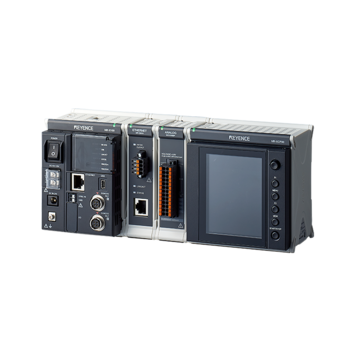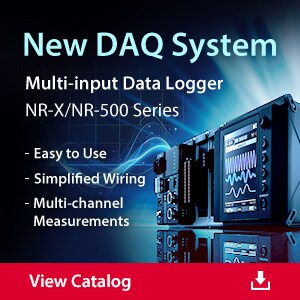Data Acquisition (DAQ)
How to Measure Pressure: A Complete Guide to Instruments and Methods
-
Tags:
- Current , Data Acquisition , Voltage
Understanding pressure management and how it is measured is very important for industries. In this guide, we will explore a complete guideline of how to measure pressure, what pressure measurement is all about, and the various types of pressure management.
What is Pressure?
Pressure is defined as the amount of physical force used on an object (this could be liquid or gas) by something in contact with it. Pressure is measured in units of force per unit of the surface area. Thus, pressure (P) equals force (F) / area (A) P=F/A.
What is Pressure Measurement?
This is the quantification of the amount of force exerted by a fluid or gas on a surface area. It's used across devices like manometers, pressure gauges, and transducers that measure pressure, helping to monitor and improve the industrial process.
Why is Measuring Pressure Needed?
Measuring pressure can be a good way to ensure the safety of your equipment and help you control the process quality of your products. Instruments used to measure pressure are called pressure gauges, vacuum gauges, or compound gauges; they vary depending on the type of pressure you intend to measure.
We’re here to provide you with more details.
Reach out today!

How is Pressure Measured? Understanding the Basics
To measure pressure, you need specialized instruments to quantify the force exerted upon the surface area. Some of the common methods and their applications depend on the range of pressure. You can do this in several ways.
- Choose the Right Pressure Device: There are various types of pressure devices. The right pressure device would be determined by the industry that you are in. After deciding the right pressure device to use, you can then proceed to the next step.
- Mount the Pressure Transducer Right Where You Want to Measure: For accurate measurement, it must be free of vibrations and other interference.
- Connect the Pressure Transducer to Your System: This will require your transducer to connect to a port and a power source. Then, connect it to a data acquisition system, for this KEYENCE offers different measurement devices to handle any pressure. KEYENCE measurement DAQ can be used for a wide range of measurements, from simple measurements to multi-aspect, multi-channel measurements.
- Check for the Device to See If It is Stable: Then, take the readings. You need to calibrate the transducer before you begin to use it to have an accurate reading of the measured pressure.
Different Instruments Used to Measure Pressure
To measure pressure a pressure sensor is needed. Pressure sensors can also be called pressure transmitters, pressure transducers, piezometers, manometers, or pressure senders. Instruments used to measure pressure can be categorized into three:
- Absolute Pressure Transducers: These pressure transducers measure pressure relative to a perfect vacuum. They measure pressure based on whether air is absolutely present or absolutely absent. Absolute pressure transducers measure pressure based on the absolute absence of atmospheric pressure.
- Differential Pressure Transducers: These transducers measure the difference in pressure between two points. They come with two ports. One pressure port is for lower pressure, while the other is for higher pressure, and they calculate the difference between the two based on the readings stored.
- Gauge Pressure Transducers: With gauge pressure transducers, pressure is measured in relation to the ambient atmospheric pressure. Simply put, it reads how much lower or higher pressure is compared to the atmospheric surroundings.
To acquire and view pressure readings from multiple sources, you can check out KEYENCE Data Logger NR-X.
The Types of Pressure Measurements
There are three types of pressure measurements:
- Absolute Pressure Measurements: Absolute pressure is any pressure that is read and detected to be above the absolute zero of pressure. KEYENCE has several devices, such as its measurement DAQ, which can be used to measure absolute pressure.
- Gauge Pressure Measurements: This is when pressure is measured relative to the ambient atmospheric pressure. It is the amount by which the pressure is measured in a fluid that exceeds that of the atmosphere.
- Differential Pressure: This is a press measurement of two different types of pressure. Where the reading and reference data are variables, if there are two different pipes, differential measurements involve measuring them by subtracting the values of one from the other.
All these readings can be logged and analyzed using KEYENCE DAQ NR-500.
Get detailed information on our products by downloading our catalog.
View Catalog

Gauge Pressure vs. Absolute Pressure: What’s the Difference?
While gauge pressure is the measurement of pressure relative to atmospheric pressure alone, absolute pressure encompasses the summing up of gauge pressure and atmospheric pressure. In other words, gauge pressure is measured relative to atmospheric pressure, and absolute pressure is measured relative to an absolute vacuum.
Absolute pressure sensors are often used when a constant reference is required. Absolute pressure is always positive because it is always measured within a perfectly sealed vacuum. Gauge pressure may be either positive or negative; it all depends on whether it is above or below atmospheric pressure.
It can best be explained using an example of a tire. Say you are trying to calculate the tire's psi (pound per square inch); if the tire pressure gauge measurement shows you 32 psi, it indicates the pressure of the tire concerning the atmospheric pressure outside the tire. This is gauge pressure.
However, the absolute pressure will be much higher. If the absolute atmospheric pressure inside the tire is 14, and the gauge is 32, then the absolute pressure will be 32 psi + 14 psi = 46 psi (the absolute pressure value).
Tips for Accurate Pressure Measurements and Pressure Checks
To get accurate pressure measurements follow these tips below:
- Use the Right Instrument to Measure Pressure: KEYENCE measurement DAQ can be used for a wide range of measurements; from absolute to gauge, you can get accurate readings.
- Calibrate Your Device Properly: This is to avoid any interference in the data reading and the data storage. Make sure it is calibrated regularly.
- Take Multiple Readings to be Sure of Their Accuracy: When reading is done more than once, you will detect and compare every data to accurately measure the pressures for the pressure checks.
- Minimize Vibration: They can affect the accurate performance of pressure transducers.
- Isolate Electrical Signals When Measuring a Closed System: To avoid any external interference.
Discover more about this product.
Click here to book your demo.

The Units of Pressure Measurements
The various units for measurements differ per type of pressure:
SI Unit for Pressure:
(Pa) equal to one newton per square meter (N/m2 or kg·m-1·s-2).
Manometric Units:
- Inches of water (inWC)
- Pounds per Square inch (psi)
- mmHg (millimeters of mercury)
Zero Reference Points:
- Absolute pressure (abs)
- Gauge pressure (g)
- Differential (d)
Manometric Units (Also Used in Atmospheric Pressures):
- Hectopascals (hPa)
- Kilopascals (kPa)
- Millibars (mbar)
Key Pressure Sensor Applications
Pressure measurements are used in various industries to monitor and measure pressure, including automotive, aerospace, and medical. However, due to their accuracy, they can be deployed in any industry.
Have more questions about DAQ hardware? Contact us today.
Contact us to learn more about how our advanced technology can help take your business to the next level.
Contact Us


